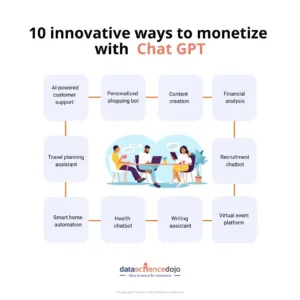Introduction
In the rapidly evolving digital landscape, creating and selling online courses has emerged as a lucrative venture. Whether you’re an expert in a particular field or possess a unique skill set, online courses offer a platform to share your knowledge and generate income. This guide will walk you through the step-by-step process of creating and successfully selling your online courses.
Understanding Your Audience (H2)
Before diving into course creation, identify your target audience. What are their needs, preferences, and pain points? Tailoring your content to meet the specific requirements of your audience is crucial for a successful online course.
Defining Your Niche (H3)
Choose a niche that aligns with your expertise and resonates with your audience. The more focused and specialized your course is, the more likely it is to attract the right learners.
Content Planning and Structure (H2)
Effective online courses require meticulous planning and a well-defined structure.
Crafting Compelling Course Outlines (H3)
Create a detailed course outline, breaking down the content into modules and lessons. This not only helps you stay organized but also provides a clear roadmap for your students.
Utilizing Multimedia Elements (H3)
Incorporate a variety of multimedia elements such as videos, quizzes, and interactive assignments to keep your course engaging and dynamic.

Choosing the Right Platform (H2)
Selecting the right platform is crucial for the success of your online course.
Comparing Popular Platforms (H3)
Explore platforms like Udemy, Teachable, and Skillshare. Compare their features, pricing, and user interface to determine the best fit for your course.
Building Your Own Website (H3)
For more control and branding opportunities, consider creating your own website using platforms like WordPress or dedicated course platforms like Kajabi.
Creating High-Quality Content (H2)
The success of your online course hinges on the quality of your content.
Recording Professional Videos (H3)
Invest in good recording equipment and create high-quality video content. Clear audio and visuals contribute significantly to a positive learning experience.
Writing Engaging Course Materials (H3)
Supplement your videos with well-written course materials. Use a conversational tone to make the content accessible and relatable.
Marketing Your Online Course (H2)
An effective marketing strategy is vital for reaching your target audience and driving course sales.
Utilizing Social Media (H3)
Harness the power of social media platforms to promote your course. Engage with your audience, share valuable content, and create a community around your course.
Implementing SEO Techniques (H3)
Optimize your course title, description, and website for search engines. This increases the visibility of your course and attracts organic traffic.
Setting the Right Price (H2)
Determining the right pricing strategy is a delicate balance between value and affordability.
Conducting Market Research (H3)
Research competitors and analyze market trends to set a competitive yet reasonable price for your course.
Offering Discounts and Promotions (H3)
Attract early adopters by offering limited-time discounts or promotional bundles. This can create a sense of urgency and drive sales.
Ensuring a Positive Learning Experience (H2)
A satisfied student is more likely to recommend your course and become a repeat customer.
Providing Excellent Customer Support (H3)
Offer prompt and helpful customer support to address any concerns or inquiries. A positive learning experience extends beyond the course content.
Gathering and Implementing Feedback (H3)
Collect feedback from students and use it to enhance your course. Continuous improvement is key to long-term success.
Analyzing Performance Metrics (H2)
Regularly analyze performance metrics to track the success of your online course.
Monitoring Enrollment and Completion Rates (H3)
Keep a close eye on the number of enrollments and course completions. Identify patterns and adjust your course content or marketing strategy accordingly.
Utilizing Analytics Tools (H3)
Leverage analytics tools to gain insights into user behavior, website traffic, and conversion rates. This data-driven approach allows for informed decision-making.
Conclusion
Creating and selling online courses is a dynamic journey that requires a combination of expertise, creativity, and strategic planning. By understanding your audience, crafting compelling content, and implementing effective marketing strategies, you can turn your knowledge into a successful online course business.
FAQs (H2)
1. How do I choose the right niche for my online course?
Choosing the right niche involves assessing your expertise, market demand, and audience preferences. Conduct thorough research and choose a niche that aligns with your passion and has a viable audience.
2. Can I use free platforms to host my online course?
While free platforms exist, they may have limitations in terms of customization and revenue potential. Investing in a dedicated course platform or building your own website provides more control and branding opportunities.
3. How can I effectively market my online course on a budget?
Utilize cost-effective marketing strategies such as social media promotion, content marketing, and SEO. Engage with your audience, leverage free marketing channels, and gradually reinvest profits into paid advertising.
4. What factors should I consider when setting the price for my online course?
Consider factors such as the value you provide, competitor pricing, and market demand. Conduct market research to understand what your target audience is willing to pay while ensuring your pricing reflects the quality of your course.
5. How do I handle negative feedback from students?
Negative feedback is an opportunity for improvement. Approach it with a constructive mindset, address concerns promptly, and use feedback to enhance your course. Building a responsive and adaptable approach to criticism is crucial for long-term success.









Add comment